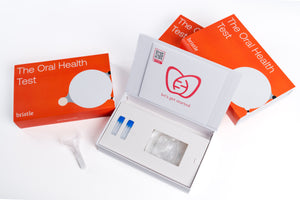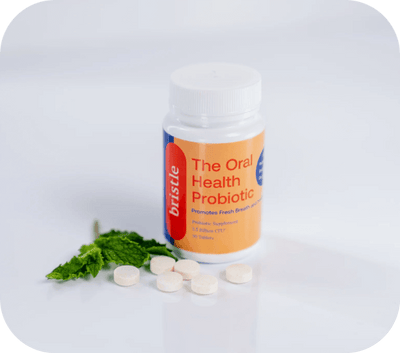Tonsil stones, also called tonsilloliths, are hard lumps that can form in your tonsils. Your tonsils are oval-shaped formations of tissues located at the back of your throat. There are two tonsils, one on each side. These tonsils have irregular surfaces; in some people, there can be folds and crevices known as tonsil crypts. Tonsil stones are formed in these pits and can cause a variety of symptoms.
Tonsil stones are a frequent occurrence and they are more common in adults than in children [1]. These stones do not usually cause pain and they are not harmful [2].
What do tonsil stones look like?Tonsil stones basically look like small pebbles. Although their size usually varies from a minute size to a pea size [3], large tonsilloliths have been reported in some cases [4]. The color of these tonsil stones can be white or pastel yellow [2], [5]. You might get one tonsil stone or a few, depending on the circumstances.
What causes them?As we previously explained, there are pits and crevices in your tonsils. Particles such as food debris, dead skin cells, and bacteria get trapped within these gaps and get pressed into hard pebbles [5]. Eventually, substances such as calcium carbonate get precipitated on these formations, hardening them into calcified stones [4]. Along with calcium, these tonsil stones may contain other minerals such as phosphorus and magnesium [4].
Bacteria play a major part in the creation of tonsilloliths, making them not mere stones, but live biofilms [1].
The microbial composition of tonsil stonesA few studies have now looked at which bacteria play a role in biofilm formation. In one study, anaerobic species such as Fusobacterium, Porphyromonas, and Tannerella species were detected, and correlated with higher levels of volatile sulfur compounds that cause bad breath, explaining how people with tonsil stones may suffer from chronic halitosis. Interestingly, several studies have looked at the microbial composition of tonsils in people with chronic tonsillitis, a condition where tonsils are inflamed, and found that the pathogens that cause gum inflammation may also be responsible for tonsil inflammation (https://journals.asm.org/doi/10.1128/mSystems.01302-20), though how this affects tonsil stone formation is still not understood.
What are the symptoms of tonsil stones?Sometimes, you might even not notice that you have tonsil stones. Others may feel that there’s something stuck in their throat and may find it hard to swallow.
They can also cause throat irritation, a persistent cough, ear pain, or a bad taste in your mouth. If you take a good look at your tonsils, you might even see the tonsil stones in the form of white or yellowish patches on your tonsils.
They can also lead to tonsil infections that are difficult to be treated with antibiotics [2].
Do tonsil stones cause bad breath?One of the main symptoms caused by tonsil stones is bad breath (or halitosis) [6]. Bacteria that collect on the tonsil stones degrade food debris in them, creating odorous compounds in the process. This causes bad breath in many who are suffering from tonsil stones.
How do you remove tonsil stones?Tonsil stones are easy to remove and need minimal force.
Can I get rid of tonsil stones myself?
Tonsil stones, especially if they are smaller, can be removed by yourself at home. Following are a few methods you can try to get rid of tonsil stones:
· Salt water gargling
It’s always a good idea to gargle your throat with warm, salty water if you feel that you have a throat irritation. This can make you feel better, reduce inflammation, and may even reduce infection. Gargling can also dislocate small tonsil stones and flush them out. It can also help reduce bad breath if you do it frequently enough. Make sure the water is not too hot or too salty to prevent throat and mouth irritations. The recommended salt-to-water ratio is one teaspoon of salt to 8 ounces of water [2].
· Using a dental water flosser
You can also use a simple piece of equipment called a dental water flosser (or an oral irrigator) to aim a gentle, yet powerful water stream at your tonsils [5]. This spurt of water can displace the tonsil stones, thus removing them.
· Coughing
Strong, forceful coughing can also dislodge tonsil stones and expel them from the throat. In fact, this is how some people find out for the first time that they have tonsil stones.
· Manual removing
If you can see or feel that you have tonsil stones but coughing or salt water gargling seems to not remove them, you can try manually taking them out. However, it’s important to keep in mind that you might scratch the soft, delicate tonsil tissues in the process. This can infect your tonsils and make matters worse.
Don’t use your fingers or hard objects to remove the tonsil stones. You can try using a soft cotton swab to make the tonsil stones come loose. There are also tonsil stone removal kits you can find online. They include soft dental picks that you can use to pick up the stones.
Can you treat tonsil stones with medications?
Usually, medications are not used to treat tonsilloliths. Occasionally your doctor may prescribe antibiotics if they think you have an underlying bacterial infection [2]. They do not, however, remove the stones nor do they prevent the tonsil stone formation.
If your tonsil stones are larger than usual, or if they are causing troublesome symptoms, your doctor may decide to surgically remove your tonsil stones [2]. If you think you need to go for this option, discuss your condition with an ear, nose, and throat (ENT) specialist.
Sometimes you might find that tonsil stones recur even after surgically removing them. In such a case, a healthcare provider may even recommend permanently removing your tonsils (a procedure called a tonsillectomy) [5].
How can you prevent tonsil stones?If you’re wondering how to prevent tonsil stones, you can easily avoid them by following basic oral hygiene practices. These include:
· Flossing your teeth daily
· Using a mild mouthwash frequently
· Regularly brushing your teeth after meals and before bed
· Gently scraping the back of your tongue while you brush your teeth
You can also regularly gargle your throat with warm, salty water to remove food and cell debris that are trapped in the crevices of your tonsils. If you’re especially prone to tonsil stones, you can also invest in an oral irrigator to gently wash out the tonsils.
These techniques will remove food and other particles that get accumulated inside the gaps in the tonsil surfaces and also reduce the number of bacteria in them.
Are tonsil stones contagious?
There are no reports that indicate that tonsil stones are contagious. Although they contain bacteria, the hardened surfaces seem to keep the germs from spreading.
Diagnosis and tests
While you might be able to spot these formations on your tonsils using a mirror, the best thing is to consult an ENT specialist and get yourself properly examined. Your doctor will use a few different methods to diagnose if you have tonsil stones and to what extent.
First, they might simply physically inspect your mouth and throat to see if they can identify tonsil stones. They might also try to dislocate the stones using a dental pick. If they’re not easily visible to the naked eye, your doctor might next order a scan or an x-ray to observe them.
Final words
Tonsil stones are common formations that can cause bad breath. They can be entirely harmless and painless and can also be hard to spot. You might not need medical assistance if your tonsil stones are not bothering you.
However, if you feel irritation in the throat or pain extending to your ears you will need to see a doctor. You will also need medical attention if your tonsils are red or swollen. Your healthcare provider will do a few tests to check whether you have tonsil stones and recommend treatments, depending on the severity of your condition.
While you can get rid of tonsil stones by yourself at home, you might need to get them professionally removed if they are particularly large or persistent.
References:
[1] “Tonsillolith: A polymicrobial biofilm - PMC.” https://www.ncbi.nlm.nih.gov/pmc/articles/PMC4529540/
[2] “Tonsil Stones (Tonsillolith): Causes, Symptoms, Removal & Treatment.” https://my.clevelandclinic.org/health/diseases/21505-tonsil-stones
[3] “Tonsillolithiasis with actinomycotic infection: a case report - PubMed.” https://pubmed.ncbi.nlm.nih.gov/19860635/
[4] “A giant tonsillolith - PMC.” https://www.ncbi.nlm.nih.gov/pmc/articles/PMC5938656/
[5] “Tuesday Q and A: Self-care steps may help prevent tonsil stones from returning - Mayo Clinic News Network.” https://newsnetwork.mayoclinic.org/discussion/tuesday-q-and-a-self-care-steps-may-help-prevent-tonsil-stones-from-returning/
[6] “Relationship between the presence of tonsilloliths and halitosis in patients with chronic caseous tonsillitis | British Dental Journal.” https://www.nature.com/articles/bdj.2007.1106











